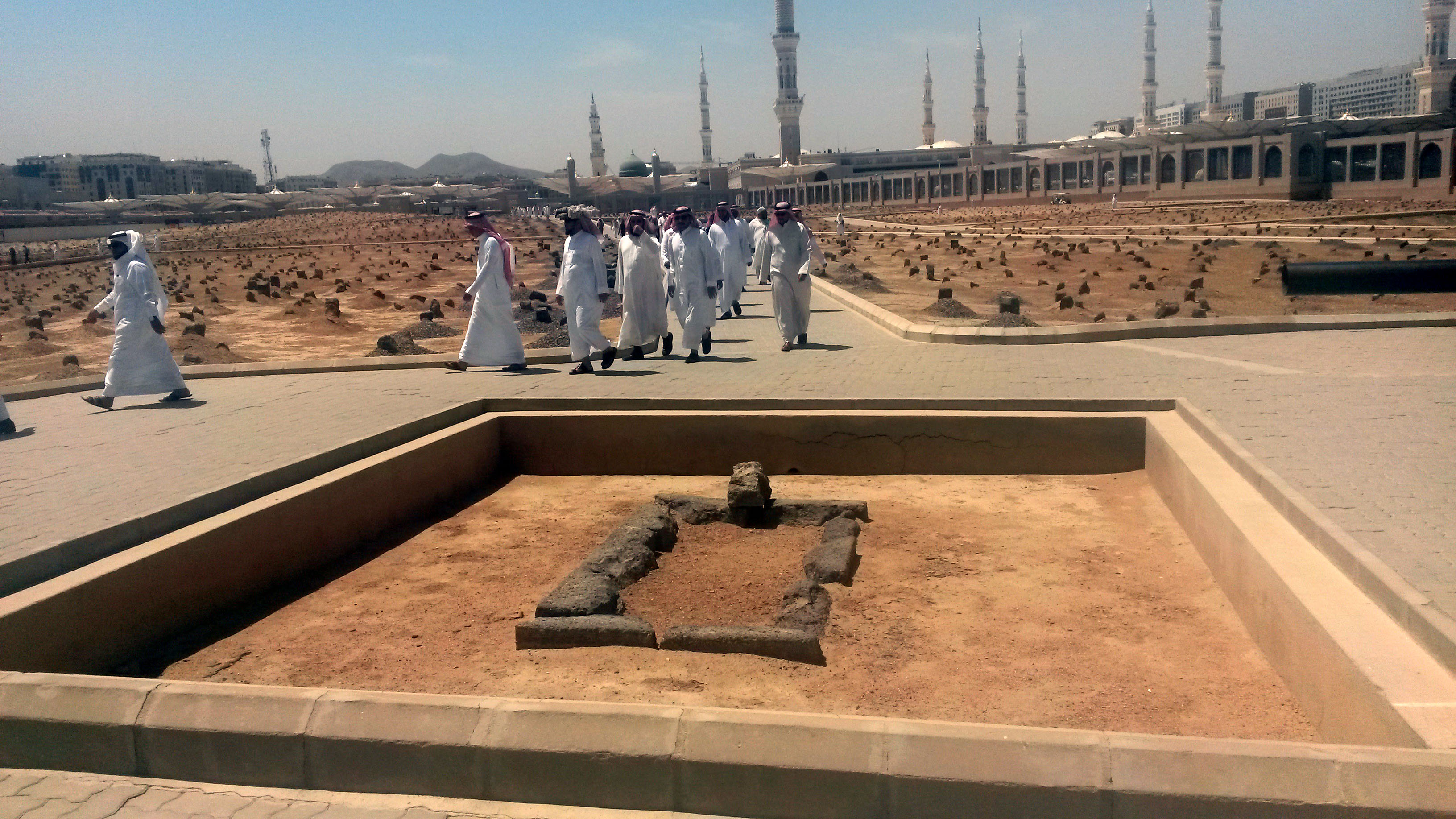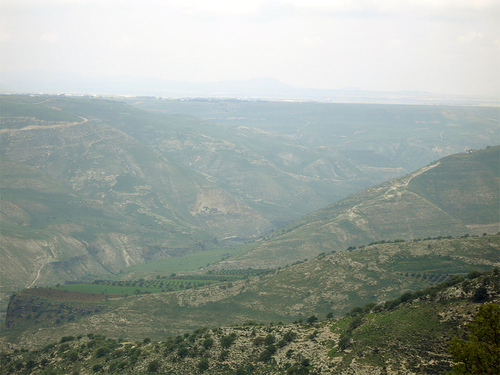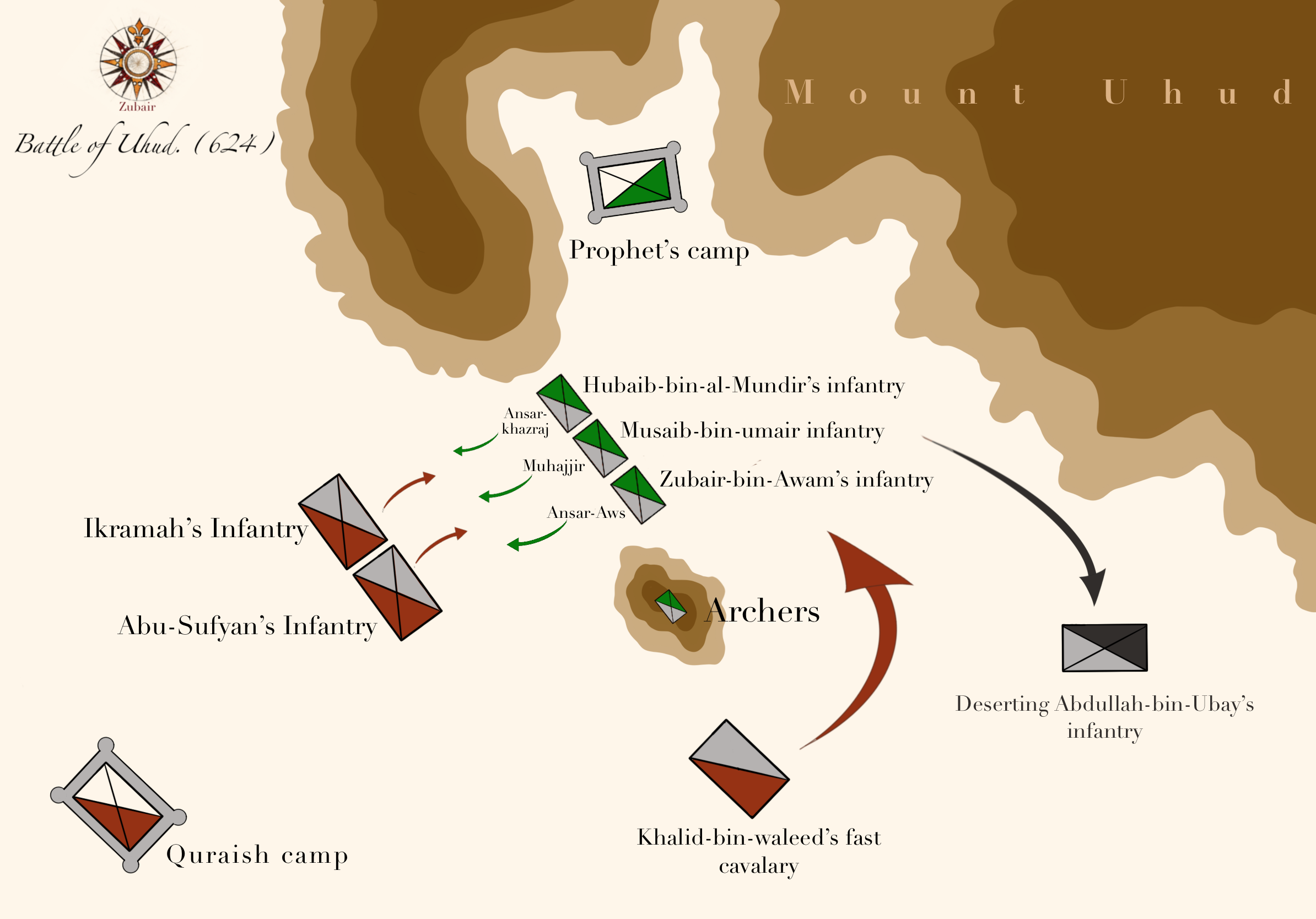|
Rashidun Caliphate Army
The Rashidun army () was the core of the Rashidun Caliphate's armed forces during the early Muslim conquests in the 7th century. The army is reported to have maintained a high level of discipline, strategic prowess and organization, granting them successive victories in their various campaigns. In its time, the Rashidun army was a very powerful and effective force. The three most successful generals of the army were Khalid ibn al-Walid, who conquered Persian Mesopotamia and the Roman Levant, Abu Ubaidah ibn al-Jarrah, who also conquered parts of the Roman Levant, and Amr ibn al-As, who conquered Roman Egypt. The army was a key component in the Rashidun Caliphate's territorial expansion and served as a medium for the early spread of Islam into the territories it conquered. Historical overview According to Tarikh at Tabari, the nucleus of the early caliphate forces were formed from the Green Division (al-Katibah al-Khadra), a unit that consisted of early converts from ... [...More Info...] [...Related Items...] OR: [Wikipedia] [Google] [Baidu] |
Rashidun Caliphate
The Rashidun Caliphate () is a title given for the reigns of first caliphs (lit. "successors") — Abu Bakr, Umar, Uthman, and Ali collectively — believed to Political aspects of Islam, represent the perfect Islam and governance who led the Muslim community and polity from the death of the Islamic prophet Muhammad (in 632 AD), to the establishment of the Umayyad Caliphate (in 661 AD). The reign of these four caliphs is considered in Sunni Islam to have been "rightly-guided", meaning that it sunnah, constitutes a model to be followed and emulated from a religious point of view. This term is not used by Shia Muslims, who reject the rule of the first three caliphs as illegitimate. Following Muhammad's death in June 632, Muslim leaders debated who Succession to Muhammad, should succeed him. Unlike later caliphs, Rashidun were often chosen by some form of a small group of high-ranking companions of the Prophet in () or appointed by their predecessor. Muhammad's close companion A ... [...More Info...] [...Related Items...] OR: [Wikipedia] [Google] [Baidu] |
Uthman
Uthman ibn Affan (17 June 656) was the third caliph of the Rashidun Caliphate, ruling from 644 until his assassination in 656. Uthman, a second cousin, son-in-law, and notable companion of the Islamic Prophet Muhammad, played a major role in early Islamic history. During his reign as caliph, he was known for ordering the official compilation of the standardized version of the Quran, known as Uthman's Quran, that is still being used today. Before his predecessor, Caliph Umar (), died in office, he appointed a committee of trustees to elect a successor. Uthman, who was then aged 68–71 years, was elected to succeed him and became the oldest person to hold such a high position. During his premiership, the Caliphate expanded further into Persia in 650 and reached as far as the provinces of Khorasan in 651. Uthman instituted centralized reforms in order to create a more cohesive administrative structure and fostered rapid economic growth. However, the last years of his re ... [...More Info...] [...Related Items...] OR: [Wikipedia] [Google] [Baidu] |
Islam
Islam is an Abrahamic religions, Abrahamic monotheistic religion based on the Quran, and the teachings of Muhammad. Adherents of Islam are called Muslims, who are estimated to number Islam by country, 2 billion worldwide and are the world's Major religious groups, second-largest religious population after Christians. Muslims believe that Islam is the complete and universal version of a Fitra, primordial faith that was revealed many times through earlier Prophets and messengers in Islam, prophets and messengers, including Adam in Islam, Adam, Noah in Islam, Noah, Abraham in Islam, Abraham, Moses in Islam, Moses, and Jesus in Islam, Jesus. Muslims consider the Quran to be the verbatim word of God in Islam, God and the unaltered, final revelation. Alongside the Quran, Muslims also believe in previous Islamic holy books, revelations, such as the Torah in Islam, Tawrat (the Torah), the Zabur (Psalms), and the Gospel in Islam, Injil (Gospel). They believe that Muhammad in Islam ... [...More Info...] [...Related Items...] OR: [Wikipedia] [Google] [Baidu] |
Muslim Conquest Of Egypt
The Arab conquest of Egypt, led by the army of Amr ibn al-As, took place between 639 and 642 AD and was overseen by the Rashidun Caliphate. It ended the seven-century-long Roman Egypt, Roman period in Egypt that had begun in 30 BC and, more broadly, the Greco-Roman period that had lasted about a millennium. Shortly before the conquest, Byzantine empire, Byzantine (Eastern Roman Empire, Roman) rule in the country had been shaken, as Egypt had been Sasanian conquest of Egypt, conquered and occupied for a decade by the Sasanian Empire in 618–629, before being recovered by the Byzantine emperor Heraclius. The Caliphate took advantage of Byzantines' exhaustion to invade Egypt. During the mid-630s, the Romans had already Muslim conquest of the Levant, lost the Levant and its Ghassanid allies in Arabia to the Caliphate. The loss of the prosperous province of Egypt and the defeat of the Byzantine armies severely weakened the empire, resulting in further territorial losses in the centu ... [...More Info...] [...Related Items...] OR: [Wikipedia] [Google] [Baidu] |
Amr Ibn Al-As
Amr ibn al-As ibn Wa'il al-Sahmi (664) was an Arab commander and companion of Muhammad who led the Muslim conquest of Egypt and served as its governor in 640–646 and 658–664. The son of a wealthy Qurayshite, Amr embraced Islam in and was assigned important roles in the nascent Muslim community by the Islamic prophet Muhammad. The first caliph Abu Bakr () appointed Amr as a commander of the conquest of Syria. He conquered most of Palestine, to which he was appointed governor, and helped lead the Arabs to decisive victories over the Byzantines at the battles of Ajnadayn and the Yarmuk in 634 and 636. Amr launched the conquest of Egypt on his own initiative in late 639, defeating the Byzantines in a string of victories ending with the surrender of Alexandria in 641 or 642. It was the swiftest of the early Muslim conquests. This was followed by westward advances by Amr as far as Tripoli in present-day Libya. In a treaty signed with the Byzantine governor Cyrus, Amr guar ... [...More Info...] [...Related Items...] OR: [Wikipedia] [Google] [Baidu] |
Muslim Conquest Of The Levant
The Muslim conquest of the Levant (; ), or Arab conquest of Syria, was a 634–638 CE invasion of Byzantine Syria by the Rashidun Caliphate. A part of the wider Arab–Byzantine wars, the Levant was brought under Arab Muslim rule and developed into the provincial region of Bilad al-Sham. Clashes between the Arabs and Byzantines on the southern Levantine borders of the Byzantine Empire had occurred during the lifetime of Muhammad, with the Battle of Muʿtah in 629 CE. However, the actual conquest did not begin until 634, two years after Muhammad's death. It was led by the first two Rashidun caliphs who succeeded Muhammad: Abu Bakr and Umar ibn al-Khattab. During this time, Khalid ibn al-Walid was the most important leader of the Rashidun army. It was the first time since the collapse of the Neo-Babylonian Empire in 539 BCE that the region was ruled again by Semitic-speaking people, after centuries of Persian (Achaemenid Empire), and then Roman-Greek ( Macedonian Empire, ... [...More Info...] [...Related Items...] OR: [Wikipedia] [Google] [Baidu] |
Muslim Conquest Of Persia
As part of the early Muslim conquests, which were initiated by Muhammad in 622, the Rashidun Caliphate conquered the Sasanian Empire between 632 and 654. This event led to the decline of Zoroastrianism, which had been the official religion of Name of Iran, Persia (or Iran) since the time of the Achaemenid Empire. The persecution of Zoroastrians by the early Muslims during and after this conflict prompted many of them to flee eastward to Indian subcontinent, India, where they were Zoroastrianism in India, granted refuge by various kings. While Pre-Islamic Arabia, Arabia was experiencing the rise of Islam in the 7th century, Persia was struggling with unprecedented levels of political, social, economic, and military weakness; the Military of the Sasanian Empire, Sasanian army had greatly exhausted itself in the Byzantine–Sasanian War of 602–628. Following the execution of Sasanian shah Khosrow II in 628, Persia's internal political stability began deteriorating at a rapid pa ... [...More Info...] [...Related Items...] OR: [Wikipedia] [Google] [Baidu] |
Khalid Ibn Al-Walid
Khalid ibn al-Walid ibn al-Mughira al-Makhzumi (; died 642) was a 7th-century Arabs, Arab military commander. He initially led campaigns against Muhammad on behalf of the Quraysh. He later became a Muslim and spent the remainder of his career serving Muhammad and the first two Rashidun caliphs: Abu Bakr and Umar. Khalid played leading command roles in the Ridda Wars against rebel tribes in Arabia in 632–633, the Muslim conquest of Persia#First invasion of Mesopotamia (633), initial campaigns in Sasanian Iraq in 633–634, and the Muslim conquest of the Levant, conquest of Byzantine Syria in 634–638. As a horseman of the Quraysh's aristocratic Banu Makhzum clan, which ardently opposed Muhammad, Khalid played an instrumental role in defeating Muhammad and his followers during the Battle of Uhud in 625. In 627 or 629, he converted to Islam in the presence of Muhammad, who inducted him as an official military commander among the Muslims and gave him the title of (). During th ... [...More Info...] [...Related Items...] OR: [Wikipedia] [Google] [Baidu] |
Early Muslim Conquests
The early Muslim conquests or early Islamic conquests (), also known as the Arab conquests, were initiated in the 7th century by Muhammad, the founder of Islam. He established the first Islamic state in Medina, Arabian Peninsula, Arabia that expanded rapidly under the Rashidun Caliphate and the Umayyad Caliphate, culminating in Muslim rule being established on three continents (Asia, Africa, and Europe) over the next century. According to historian James Buchan: "In speed and extent, the first Arab conquests were matched only by those of Alexander the Great, and they were more lasting." At their height, the territory that was conquered by the Arab Muslims stretched from Iberian Peninsula, Iberia (at the Pyrenees) in the west to Indian subcontinent, India (at Sind (caliphal province), Sind) in the east; Muslim control spanned Sicily, most of the Middle East and North Africa, and the Caucasus and Central Asia. Among other drastic changes, the early Muslim conquests brought about ... [...More Info...] [...Related Items...] OR: [Wikipedia] [Google] [Baidu] |
Amr Ibn Al-'As
Amr ibn al-As ibn Wa'il al-Sahmi (664) was an Arab commander and companion of Muhammad who led the Muslim conquest of Egypt and served as its governor in 640–646 and 658–664. The son of a wealthy Qurayshite, Amr embraced Islam in and was assigned important roles in the nascent Muslim community by the Islamic prophet Muhammad. The first caliph Abu Bakr () appointed Amr as a commander of the conquest of Syria. He conquered most of Palestine, to which he was appointed governor, and helped lead the Arabs to decisive victories over the Byzantines at the battles of Ajnadayn and the Yarmuk in 634 and 636. Amr launched the conquest of Egypt on his own initiative in late 639, defeating the Byzantines in a string of victories ending with the surrender of Alexandria in 641 or 642. It was the swiftest of the early Muslim conquests. This was followed by westward advances by Amr as far as Tripoli in present-day Libya. In a treaty signed with the Byzantine governor Cyrus, Amr guar ... [...More Info...] [...Related Items...] OR: [Wikipedia] [Google] [Baidu] |
Mu'adh Ibn Jabal
Mua'dh or Moath or Muaz is a male Arabic given name. Notable people with the name include: *Muadh ibn Jabal (603–639), companion of Muhammad Muhammad (8 June 632 CE) was an Arab religious and political leader and the founder of Islam. Muhammad in Islam, According to Islam, he was a prophet who was divinely inspired to preach and confirm the tawhid, monotheistic teachings of A ... * Sa'd ibn Mu'adh ( 590-627), companion of Muhammad {{given name Arabic-language masculine given names Masculine given names ... [...More Info...] [...Related Items...] OR: [Wikipedia] [Google] [Baidu] |
Sa'd Ibn Abi Waqqas
Sa'd ibn Abi Waqqas ibn Wuhayb al-Zuhri () was an Arabs, Arab Muslims, Muslim commander. He was the founder of Kufa and served as its governor under Umar, Umar ibn al-Khattab. He played a leading role in the Muslim conquest of Persia and was a close Companions of Muhammad, companion of the Islamic prophet Muhammad. Sa'd was the seventh free adult man to embrace Islam, which he did at the age of seventeen. Sa'd participated in all battles under Muhammad during their stay in Medina. Sa'd was famous for his leadership in the Battle of al-Qadisiyyah and the conquest of the Sasanian capital Ctesiphon in 636. After the Battle of al-Qadisiyyah and the Siege of Ctesiphon (637), Sa'd served as the supreme commander of the Rashidun army in Iraq, which Muslim conquest of Khuzestan, conquered Khuzestan and built the amsar, garrison city of Kufa. Due to complaints about his conduct, he was later dismissed from his post by the caliph Umar. During the First Fitna, Sa'd was known for leading the ... [...More Info...] [...Related Items...] OR: [Wikipedia] [Google] [Baidu] |






